When Beat of Hawaii first launched, we looked out over Honolulu Harbor from the Maritime Center’s rooftop deck and saw the Falls of Clyde below, proud, fragile, and clearly already fading. This week, the ship was towed twenty-five miles offshore and scuttled, closing a very long and historic chapter that began before Hawaii was even a U.S. territory and that quietly shadowed our site’s early years. The lead image we took, too, was before we became more adept at photography.
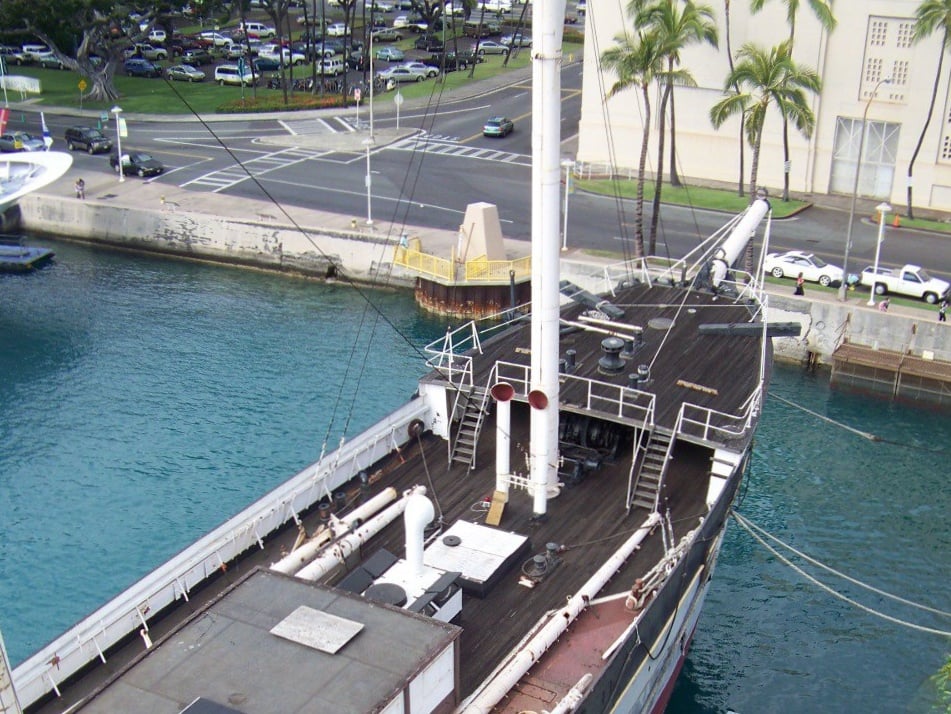

How Hawaii’s last tall ship began.
Launched in Scotland in 1878, Falls of Clyde was one of the famed Falls Line vessels, each named after a Scottish waterfall. She was built of wrought iron, stretched 266 feet, and once earned the top rating from Lloyd’s of London.
Purchased by Captain William Matson in 1898 for the sugar trade between Hawaii and San Francisco, she became the first four-masted iron ship to enter Honolulu flying the Hawaiian flag. After later conversion to an oil tanker, she gained historic distinction as the world’s only surviving four-masted, full-rigged ship and the oldest American tanker ever built.
By 1989, Falls of Clyde was designated a National Historic Landmark and served as the centerpiece of the Hawaii Maritime Center, where we first met her.
From optimism to decline.
Back in 2009, we wrote about the museum’s last days and the ship’s uncertain fate. There was still talk of restoration then, and a sense that public will might save her. Instead, fifteen years later, the reality proved far harsher.
The Friends of Falls of Clyde could not overcome the spiraling costs, safety issues, and bureaucratic entanglement. The Department of Transportation took custody, and with federal clearance, the ship was sunk in deep Pacific Ocean waters earlier this week.
What was saved tells its own story.
Officials say sections of the ship, including the bell and select fittings, will be preserved for future display, and curators at the San Francisco Maritime National Historical Park have agreed to archive digital models and historic materials. What could not be salvaged now rests on the Hawaii seabed, becoming part of Hawaii’s artificial-reef network and, perhaps, a new home for fish rather than sailors.
For many in Hawaii, that act feels like a small loss but also an inevitability. Preservation dreams here often run aground on money, corrosion, and time. Yet for residents and visitors who remember walking nearby or spotting her masts from Nimitz Highway, the Falls of Clyde was more than just steel and timber. It was a tangible link between old Honolulu’s harbor days, the beginning of island shipping, and the city’s modern skyline.
Remembering what Honolulu once showed visitors.
The Hawaii Maritime Center is gone, too. So are many small museums and cultural sites that once gave visitors texture beyond beaches and shopping. When we started Beat of Hawaii, we hoped those stories would last longer than the press releases about them.
Should Hawaii have saved Falls of Clyde, or was this always how it was set to end?
Photo Credits: Beat of Hawaii in 2009 at Falls of Clyde.
Get Breaking Hawaii Travel News
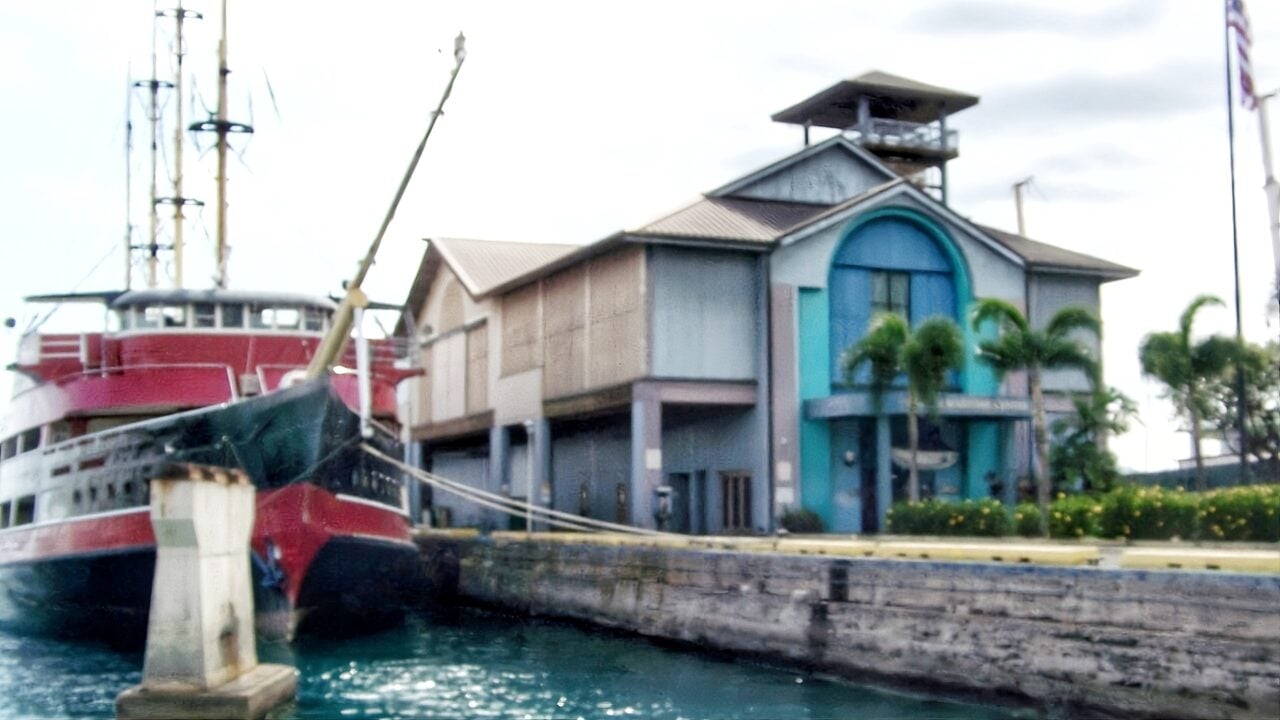

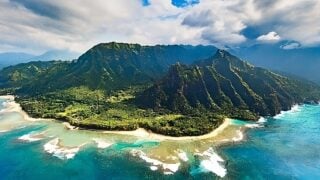

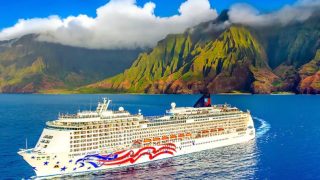

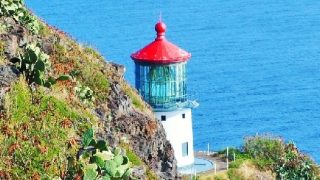
This broke my heart. Remember so many times showing her to people including my Husband and then my Grandson. And if I am not misinformed, 2 different companies actually offered to take her to Scotland to be restored for Free, but the Honolulu Harbor people kept throwing red herring at the problem and decided it was better to scuttle her. But, they are anxious to do something “modern” with that area. Guess they can add another tax on visitors for that new project.
The Elissa, an 1877 square-rigged iron barque was rescued from a scrap yard and now sails out of Galveston with her square rig. She is one of three ships in the world of her kind that still actively sails and welcomes over 40,000 visitors annually. She is the Official Tall Ship of Texas and a National Historical Monument. She has recently been joined by the Battleship Texas for display at the port of Galveston. She was recently moved from where she was on display on the Houston Ship Channel to dry dock to accomplish needed refurbishing and will now be on display in the Port of Galveston along with Elissa. It can be done.
So glad it is gone. It was an eyesore and a hazard for the harbor. Good riddance.
The Sydney maritime museum has the 1874 Scottish iron hulled “James Craig” tall ship. If you visit it you will see it had been derelict on a Tasmania beach for decades full of rusted holes, in far worse shape than Falls of Clyde. It was restored and is sailed on a regular basis. Their site says it is one of four iron hulled ships that is in sailing condition.
The San Francisco Maritime Museum is able to keep the Balclutha (launched Glasgow, 1886) open and well maintained unlike Bishop Museum which walked away from Falls after stealing hundreds of thousands in donations meant for her upkeep.
From Wikipedia: “The Bishop Museum, “has been accused of incompetence and dishonesty” for raising $600,000 to preserve the ship but then spending only about half that.”
I wish Falls of Clyde could have been put on display in a dry dock museum! I have paid to go see that For Sure! It would have generated interest along with created a community of trades peoples skilled in restoration of ships! Anyway thanks for the story! I love Hawaii! Every bit of Hawaii!❤️
Cetan in Miranda CA
For years San Diego had a rusting hulk on its waterfront, the the 1863 launched, iron hulled, 3 master, the Star of India. The city mustered the will and the money to restore and preserve it and today it is the center piece of their maritime museum. The state of Hawaii on the other hand, sadly, could summon neither the will nor the money to preserve its history and instead sent it 12,000 feet to the bottom of the ocean. Truely a sad loss.
The San Francisco Maritime Museum is able to keep the Balclutha (launched Glasgow, 1886) open and well maintained unlike Bishop Museum which walked away from Falls after stealing hundreds of thousands in donations meant for her upkeep.
From Wikipedia”The Bishop Museum, “has been accused of incompetence and dishonesty” for raising $600,000 to preserve the ship but then spending only about half that.”
I’m sure that saving a ship that old would have been expensive, but it is a shame the money could not be found. There seems to be money for many other things, but preserving a ship that is historical doesn’t seem to be one of them. That’s really too bad. It’s a loss for everyone who visits Hawaii.